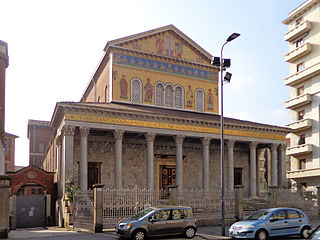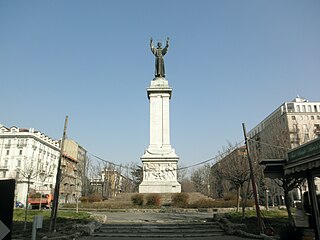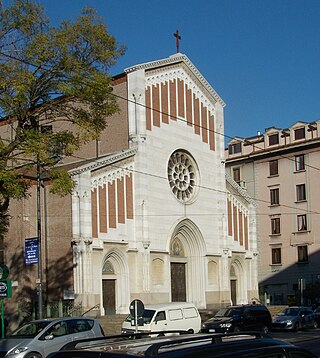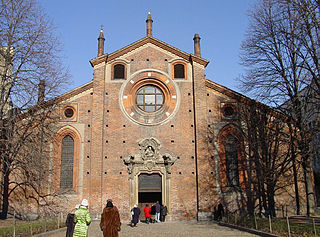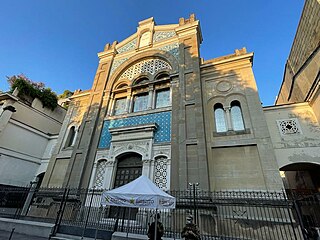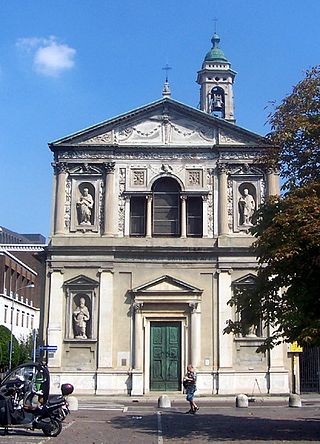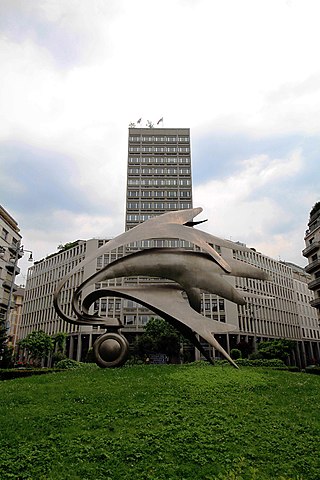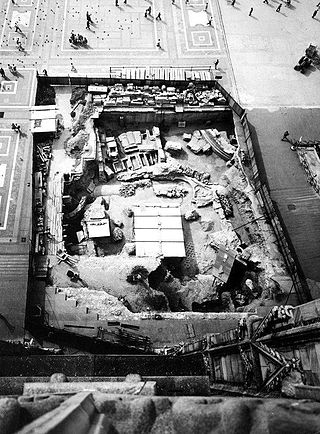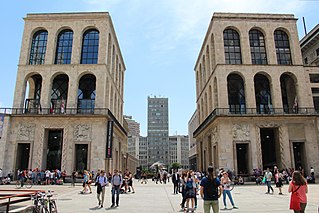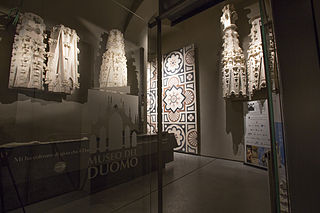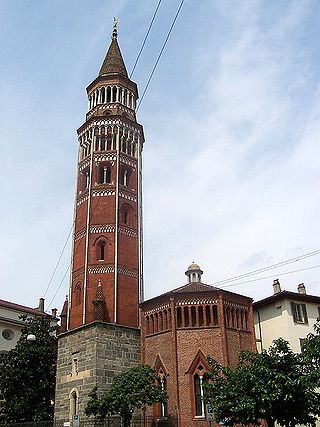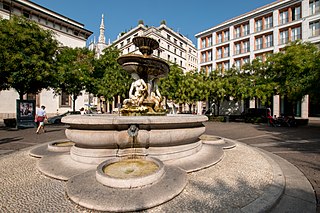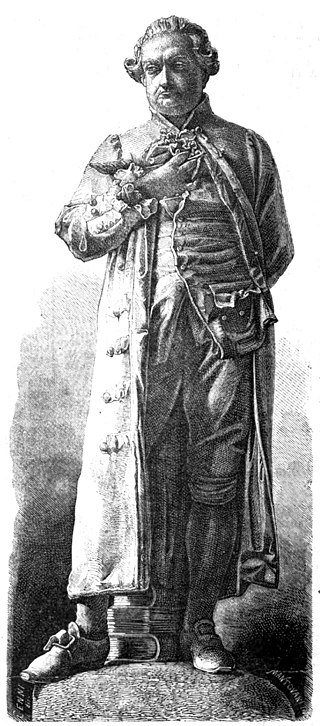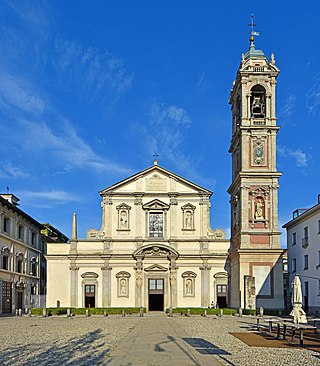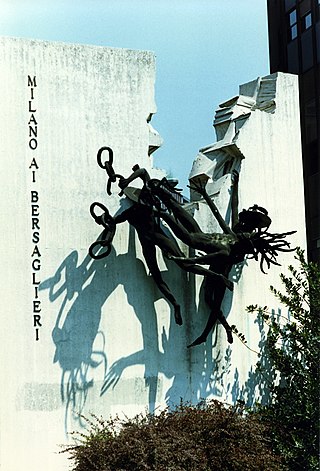Self-guided Sightseeing Tour #6 in Milan, Italy
Legend
Guided Free Walking Tours
Book free guided walking tours in Milan.
Guided Sightseeing Tours
Book guided sightseeing tours and activities in Milan.
Tour Facts
12.2 km
201 m
Experience Milan in Italy in a whole new way with our free self-guided sightseeing tour. This site not only offers you practical information and insider tips, but also a rich variety of activities and sights you shouldn't miss. Whether you love art and culture, want to explore historical sites or simply want to experience the vibrant atmosphere of a lively city - you'll find everything you need for your personal adventure here.
Activities in MilanIndividual Sights in MilanSight 1: Chiesa di Santa Croce
The church of Santa Croce is a Catholic place of worship of the Ambrosian rite in Milan located in Via Sidoli, in the Acquabella area, not far from Piazzale Susa and Piazzale Novelli. Built to a design by the Piedmontese architect Cecilio Arpesani (1853-1924) between 1913 and 1917, it was erected into a parish on 9 February 1920.
Sight 2: Fontana a Pinocchio
The Fontana a Pinocchio is a fountain and sculptural monument located in a traffic island in Corso Indipendenza, a central avenue of Milan, Italy. It is decorated with a complex of bronze statues based on Carlo Collodi's The Adventures of Pinocchio, designed by Italian sculptor Attilio Fagioli (1877–1966) and realized by the Fonderia Artistica Battaglia foundry.
Sight 3: Statua di San Francesco d'Assisi
The monument to St. Francis of Assisi is located in Piazza Risorgimento in Milan. The monument was inaugurated in 1926 by the then cardinal of Milan, Eugenio Tosi, on the occasion of the seventh centenary of the death of St. Francis.
Sight 4: Santa Maria del Suffragio
The church of Santa Maria del Suffragio is a Catholic place of worship in Milan, Italy, located in Corso XXII Marzo.
Wikipedia: Chiesa di Santa Maria del Suffragio (Milano) (IT), Website
Sight 5: Monumento alle Cinque Giornate di Milano
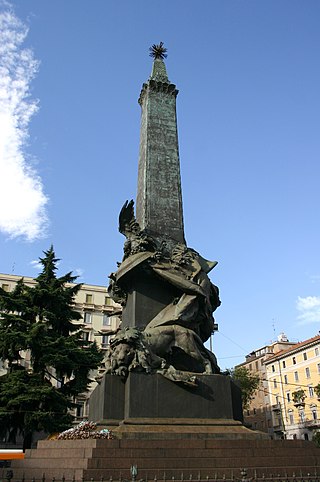
The Monument to the Five Days of Milan is a monument comprising a bronze obelisk and sculptures on a plinth located in the center of Piazza Cinque Giornate in Milan, Italy. The monument was created by Italian sculptor Giuseppe Grandi and inaugurated in 1895 to commemorate the Five Days of Milan, a rebellion of 18–22 March 1848 which caused the Austrian army to withdraw from Milan. In this site, once rose the Porta Vittoria, the eastern gate in the Medieval Spanish Walls of Milan, whose capture by the rebellion prompted the Austrians to abandon the city.
Sight 6: Chiesa di San Pietro in Gessate
San Pietro in Gessate is a church in Milan, northern Italy. Built in the 15th century, it is a noteworthy example of Gothic architecture.
Sight 7: Tempio Israelitico
The central synagogue of Milan, built in 1892, rebuilt in 1947 and again renovated in 1997, is the main place of worship of the Jewish community of Milan. Since 1993 it has taken the name of Hechal David u-Mordechai Central Temple. It is located in via Guastalla 19.
Sight 8: Chiesa dei Santi Barnaba e Paolo
San Barnaba is a church in Milan, Italy. It is the first edifice of the Barnabites order.
Sight 9: Giardino della Guastalla
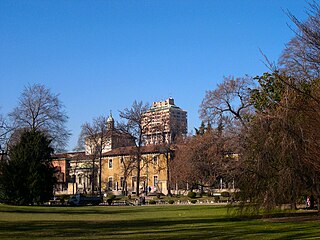
The Guastalla Gardens are a park in Milan. Overlooking Via Francesco Sforza, in front of the State University of Milan and next to the Maggiore Hospital, they are among the least extensive, but also some of the oldest public gardens in Milan.
Sight 10: Sguardo Fisico
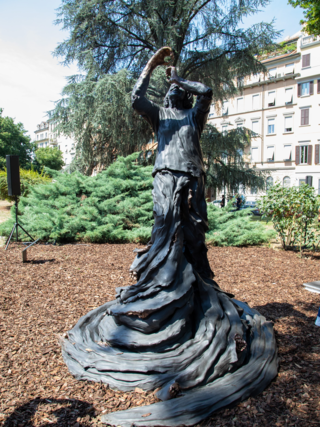
The monument to Margherita Hack is a bronze sculpture placed in Milan in Largo Richini and erected in 2022 in memory of the famous astrophysicist and academic.
Sight 11: Basilica San Nazaro in Brolo
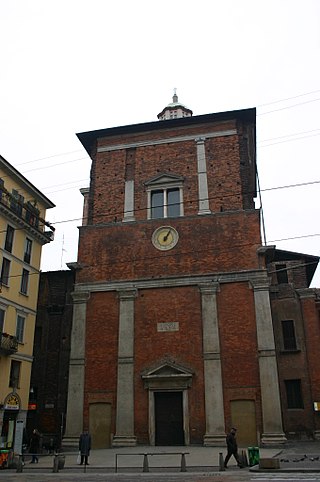
The basilica of San Nazaro in Brolo or San Nazaro Maggiore is a 4th-century Roman Catholic church in Milan, region of Lombardy, Italy.
Sight 12: Teatro Lirico Giorgio Gaber
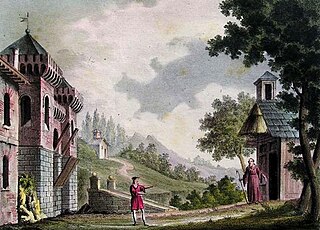
The Teatro Lirico is a theatre in Milan, Italy. In the 19th and early 20th centuries it hosted numerous opera performances, including the world premieres of Donizetti's L'elisir d'amore and Giordano's Fedora. The theatre, located on Via Rastrelli, closed in 1998. However, a restoration project was begun in April 2007, and it has finally re-opened in December 2021 as the Teatro Lirico Giorgio Gaber. Stage Entertainment carried on the renovation of the Theatre, completing all finishes and all workings started by the administration "Comune di Milano".
Sight 13: Monumento al Carabiniere
The monument to the Carabiniere is a sculpture by Luciano Minguzzi located in Piazza Diaz in Milan.
Sight 14: Cripta di San Giovanni in Conca
San Giovanni in Conca is a crypt of a former basilica church in Milan, northern Italy. It is now located in the centre of Piazza Missori.
Sight 15: Monumento a Giuseppe Missori

Giuseppe Missori was an Italian patriot, military leader during the Italian unification, and politician. He served under Garibaldi during the Second Italian War of Independence, the Expedition of the Thousand, and the Third Italian War of Independence. After the unification of Italy, he was twice a member of the City Council of Milan.
Wikipedia: Equestrian Monument to Giuseppe Missori, Milan (EN)
Sight 16: Palazzo Trivulzio
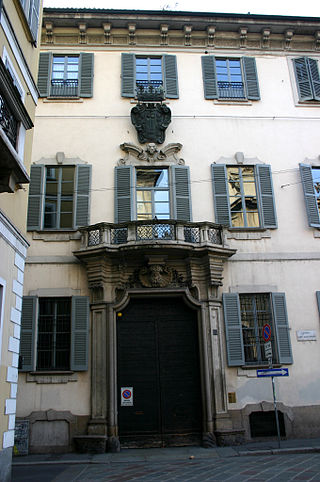
Palazzo Trivulzio is a historic building located in the center of Milan, in Piazza Sant'Alessandro n. 6.
Sight 17: Torre Romana del Carrobbio
The Roman walls of Milan were a wall with towers that had different phases of construction during the Roman era. A first phase took place in the Republican era and a second after 291, in the imperial era, at the time of Augustus Maximian, when Mediolanum became the capital of the Western Roman Empire.
Sight 18: San Bernardino alle Monache
San Bernardino alle Monache is a Renaissance style church on Via Lanzone 13 in central Milan, Italy. This was originally a chapel within the nunnery of St Bernard. The monastery no longer exists. It was built around 1447 to designs by Pietro Antonio Solari. The interior contains frescoes from the 15th century and before. Some are attributed to Vincenzo Foppa. The church was restored in the last century.
Sight 19: Santa Maria presso San Satiro
Santa Maria presso San Satiro is a church in Milan. The Italian Renaissance structure (1476–1482) houses the early medieval shrine to Satyrus, brother of Saint Ambrose. The church is known for its false apse, an early example of trompe-l'œil, attributed to Donato Bramante.
Sight 20: Monumento a Vittorio Emanuele II
The monument to Vittorio Emanuele II is a sculptural group located in the center of Piazza del Duomo in Milan. It was solemnly inaugurated on June 24, 1896.
Sight 21: Battistero di San Giovanni alle Fonti
The baptistery of San Giovanni alle Fonti was one of the first baptisteries in the city of Milan. Dedicated to John the Baptist and built from 378 to 397 at the behest of St. Ambrose in the late imperial Roman era in the period in which the Roman city of Mediolanum was the capital of the Western Roman Empire, it was located in close proximity to the basilica vetus and the basilica maior in an intermediate position between the two where the modern Piazza del Duomo now stands. The presence of two basilicas very close together was in fact common in Northern Italy during the Constantinian age and could be found, in particular, in cities as bishoprics.
Sight 22: Madonnina del Duomo di Milano
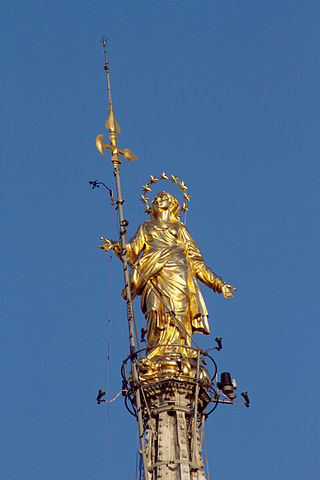
The Madonnina is a statue of the Virgin Mary atop Milan Cathedral in Italy.
Sight 23: Museo del Novecento
Get Ticket*The Museo del Novecento is a museum of twentieth-century art in Milan, in Lombardy in northern Italy. It is housed in the Palazzo dell'Arengario, near Piazza del Duomo in the centre of the city.
Sight 24: Duomo Museum
The Grande Museo del Duomo di Milano, owned by the Veneranda Fabbrica, is housed inside the Palazzo Reale di Milano, in Piazza del Duomo.
Sight 25: San Gottardo Church
San Gottardo in Corte or San Gottardo a Palazzo is a church in Milan, northern Italy.
Sight 26: Chiesa di Sant'Antonio Abate
Sight 27: Fontana del Piermarini
The Piermarini fountain is a neoclassical fountain, the work of the architect Giuseppe Piermarini, located in Milan at the square of the same name. Inaugurated on August 15, 1782, it is considered the first fountain built in the Milanese city.
Sight 28: Chiesa di Santa Maria Annunciata in Camposanto
The church of Santa Maria Annunciata in Camposanto is a Catholic place of worship in Milan, incorporated within the building of the Veneranda Fabbrica del Duomo, behind the cathedral.
Wikipedia: Chiesa di Santa Maria Annunciata in Camposanto (IT)
Sight 29: Statua a Cesare Beccaria
The monument to Cesare Beccaria is a bronze sculpture placed in Piazza Cesare Beccaria in Milan.
Sight 30: Chiesa di San Bernardino alle Ossa
San Bernardino alle Ossa is a church in Milan, northern Italy, best known for its ossuary, a small side chapel decorated with numerous human skulls and bones.
Sight 31: Santo Stefano Maggiore
Basilica di Santo Stefano Maggiore is a church in Milan, Italy. It was established in the 5th century. Originally dedicated to both Saint Zechariah and Saint Stephen, it was later dedicated to Saint Stephen only. Throughout its history, has undergone several reconstructions, expansion and restoration.
Sight 32: Chiesa Evangelica Valdese
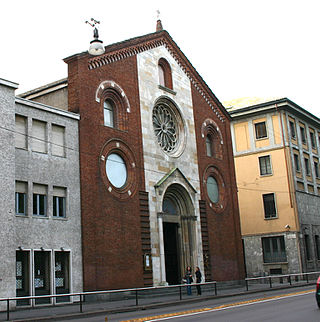
Tempio Valdese is a Protestant church in Milan, Italy. It was built in 1950.
Sight 33: Colonna del Verziere
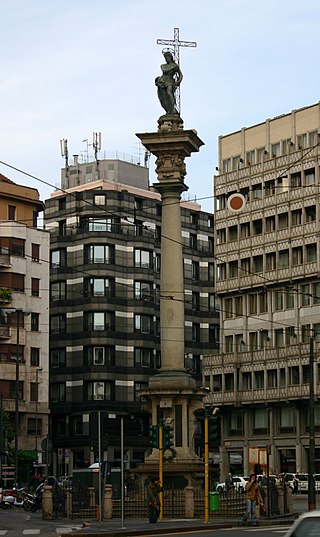
The Verziere Column is a baroque-manneristic monumental column dedicated to "Jesus Christ the Redeemer", in Milan, Italy. The column is located in Largo Augusto and it is named after the "Verziere", the traditional greengrocery street market of Milan that, until 1783, was located in the surrounding district. The construction of the column began in 1580, but it was only completed in 1673.
Sight 34: Monumento ai Bersaglieri
The monument to the Bersaglieri is a monument located in Largo Bersaglieri in Milan.
Sight 35: Palazzo Cusini
Palazzo Cusini is a historic building in Milan, located in Via Durini at number 9.
Sight 36: Chiesa di Santa Maria della Sanità
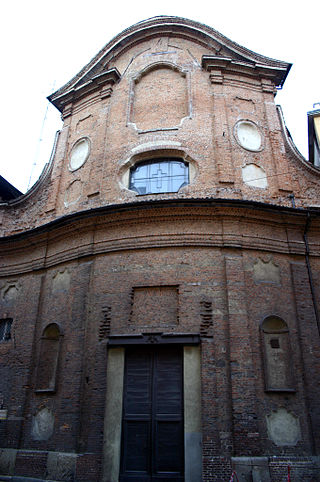
Santa Maria della Sanità also known as dei Crociferi, is a late-Baroque or Rococo style, Roman Catholic church located on Via Durini #19 in Milan, in the region of Lombardy in Italy.
Sight 37: Chiesa di Santa Maria della Passione
Santa Maria della Passione is a late Renaissance-style church located in Milan, Italy.
Sight 38: Villa Necchi Campiglio
Villa Necchi Campiglio is a historic residence located at via Mozart, 14, Milan. It was built between 1932 and 1935 as an independent single-family house designed by Piero Portaluppi, an important Milanese Rationalist architect, and is surrounded by a large private garden with a tennis court and swimming pool. This was the second swimming pool ever to be built in Milan after the municipal one, and the first to be built on private land.
Wikipedia: Villa Necchi Campiglio (EN), Website, Tripadvisor, Instagram, Facebook
Share
How likely are you to recommend us?
Disclaimer Please be aware of your surroundings and do not enter private property. We are not liable for any damages that occur during the tours.
GPX-Download For navigation apps and GPS devices you can download the tour as a GPX file.
